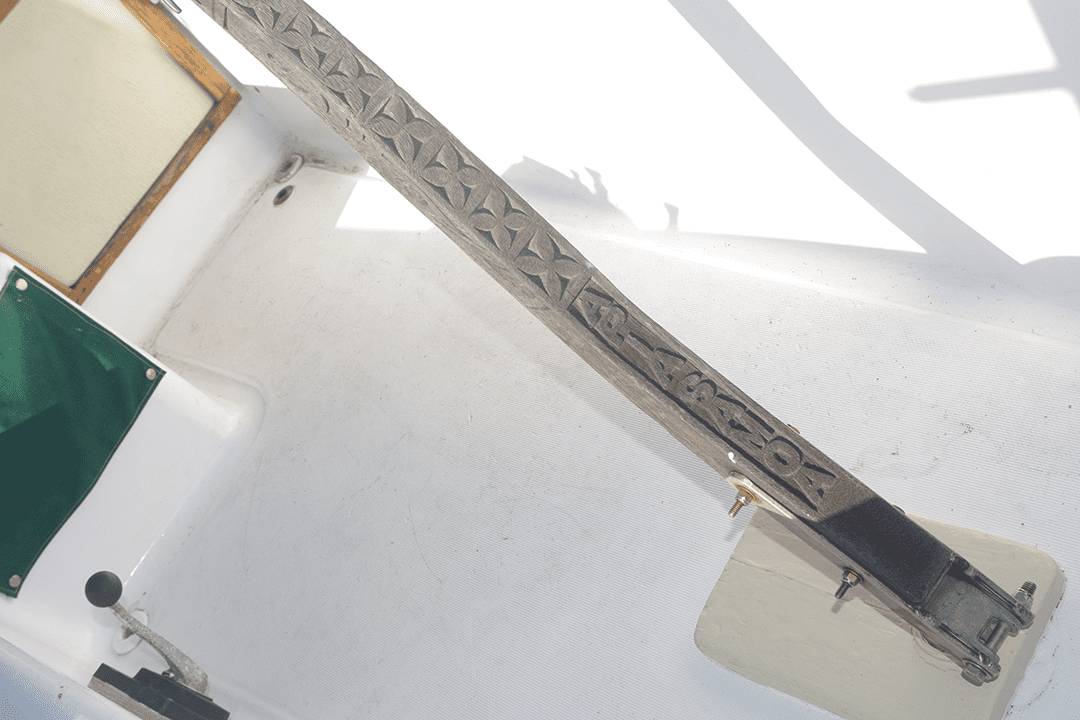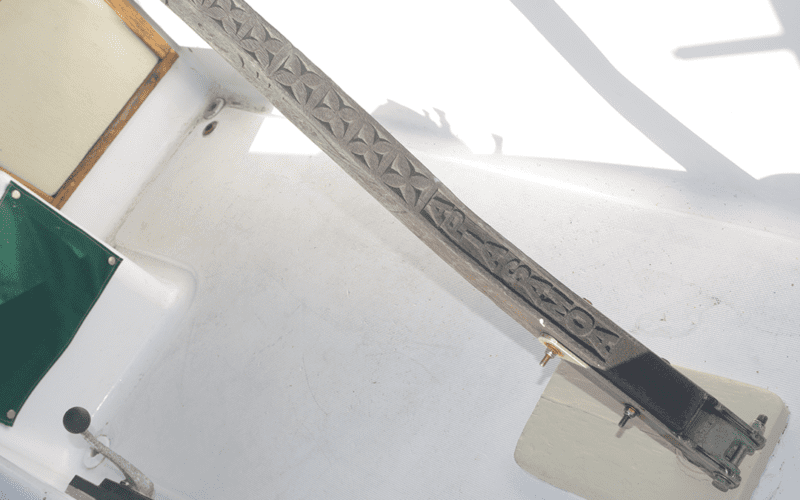
Having weighed anchor in Pago Pago Harbor bright and early after 10 months of teaching high school English and waiting for the end of cyclone season, I, along with my wife Marilu, waved goodbye to a handful of fellow yachties standing on their decks wishing us well.
“Tea for the Tillerman,” my favorite Cat Stevens album, was playing on a portable cassette stereo out on deck while I gripped the laminated ash tiller, wending around boats in the anchorage.
“Hey, Babe, could you pour me another cup of tea?” Marilu stepped down into the galley to grab the teapot. I sipped the steaming, hot waker-upper, which, when you think about it, was kind of silly in the sultry, sweaty atmosphere of American Samoa.
“Why don’t you try the local coffee?” Marilu asked as I checked the depth sounder. I explained to her yet again how South Pacific robusta coffee bothers my stomach and gives me the shakes—too much acid and caffeine for this lightweight.
Saltaire motored through the channel leading to the outer coral reef and open water, and I worried about the condition of the shapely ash tiller with the Turk’s head knot I had made just above the hinge bracket. Over several years’ time, water had soaked through the salt-encrusted, wrap-around knot, causing serious dry rot in the wood. Now, where in blast would I be able to find a new tiller? My limited supply of tools simply were not up to the job of cutting and shaping a piece of hardwood to the specifications this device required.
A pleasant breeze and settled conditions under a cloudless sky delivered us to Apia, the capital of Samoa on the island of Upolu, in the early evening after a brisk, 65-mile sail. The following morning, I unbolted Saltaire’s tiller, and we walked through central Apia, shopping around for a piece of clean, knot-free ifilele suitable for the project. Dig, a local New Zealander who had settled on the island with his Samoan wife, produced the chunk of needed wood later that day.
Marilu and I enjoyed a light lunch and a Vailima beer before walking up a long road to a furniture maker’s shop. When we showed our moribund tiller to Sione, the owner, he introduced us to his wood carver, Alofa, a young man in his mid-twenties. We explained how we wanted the piece finished with traditional Samoan carvings, a truly unique tiller. Alofa took one look at the old tiller and said with a smile, “Come back later this week. I’ll see what I can do.”
Over the next few days, we hung out with the cruiser crowd at the local bars, sharing sea stories and comparing notes on how to proceed to Tonga, Fiji, New Caledonia and then Queensland, Australia, where we would wait out the storm season.
Upon our return to Sione’s shop four days later, Alofa presented us with an exquisitely carved tiller, complete with the name Apia, Samoa, carved just above the hinge. The remaining top side of the tiller was lined with a traditional Samoan flower motif. “Wow!” Marilu and I burst with approval.
The following morning, we weighed anchor and set sail for Neiafu, Vava’u, in northern Tonga. Aiming for open water, I sipped a piping hot cup of tea in the sweltering tropical heat, happily steering with Saltaire’s beautiful new tiller, listening to Cat Stevens sing another song from the same album: “Miles from Nowhere.”

